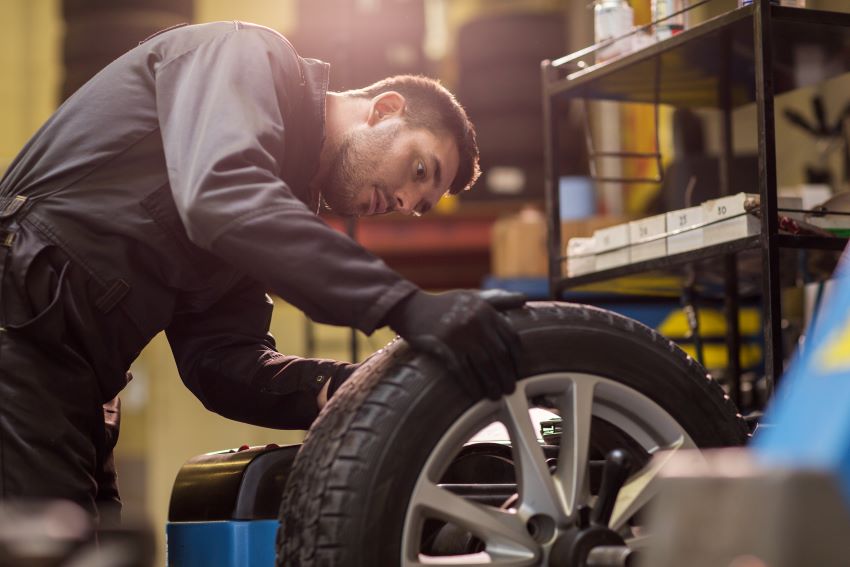This article on how to properly balance tire and wheel assemblies is the final 2012 installment in our series covering basic tasks performed in tire dealerships.
The first in the series was an article on Basic Tire Repair (February), the second on Tire Mounting/Demounting (May) and the third on Tire Rotation (August).
This latest article covers generally accepted practices for balancing tire and wheel assemblies. It is intended not only for new tire technicians, but also veterans who want to brush up on their techniques.
Photos, diagrams and background information were supplied by Hennessey Industries’ Coats brand. The recommendations made in this article are based on the use of a Coats 1250 tire/wheel balancer. There are other brands of wheel balancers on the market, and this does not mean that we endorse any one brand over another. We suggest that you save this article – and the entire Back2Basics series – for future reference.
It is important to note this article only applies to consumer tires and does not address commercial tire applications – light or medium truck tires – or the use of outside balancing aids that would be installed into the tire/wheel cavity.
Background On Tire/Wheel Balancing
Tire/wheel assembly balancing is a very basic service, and still a good profit center for tire dealers who invest in the necessary equipment.
Modern cars and light trucks/SUVs are highly tuned vehicles, and anticipated performance, driver comfort, fuel economy and tire life all can be negatively impacted by even the slightest imbalance. Fractions of an ounce truly do matter today.
Current tire/wheel balancers are much easier to use than earlier machines or the old-school bubble balancers, with many automatic and computer-generated features designed to deliver exceptional balance. Many modern tire/wheel balancers include features such as direct drive motors, multiple balancing modes, laser guides, automatic starting with a cycle of seconds, weight storage bins and automatic static balancing.
There are a number of reasons why you should be checking the balance of the tires/wheels on your customers’ vehicles.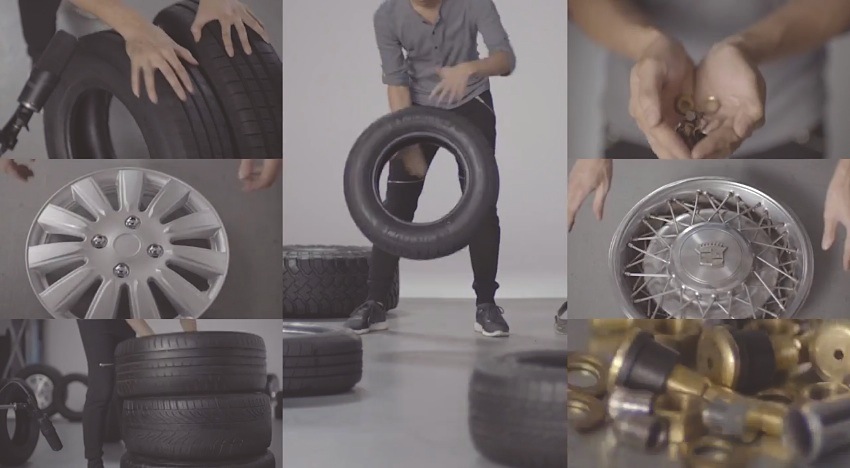 The three basic times when balancing should be done include:
The three basic times when balancing should be done include:
• When a tire is replaced or repaired
• When a balance weight is moved or falls off
• When new tires are purchased
Tire technicians know that balancing tire/wheel assemblies can eliminate vibration and wobbling. This will improve tire wear, increase fuel mileage and remove stress from a vehicle. Vibration caused by out-of-balance tires usually occurs at speeds of 50 mph to 70 mph. Consumers who only drive around town and not on expressways may never notice their tires are unbalanced, but damage is still being done.
Today’s high-quality tires will hold their balance well unless an outside force, such as hitting a curb or the loss of a weight, occurs. Technicians also should check to see if a customer has locking wheel lugs in some positions. Some locking lugs are up to 1.5 ounces heavier than conventional lug nuts, which may cause a half-ounce or so translation to the wheel.
Types Of Balancing
In many cases, when a tire is manufactured, it is inspected for static and dynamic balance.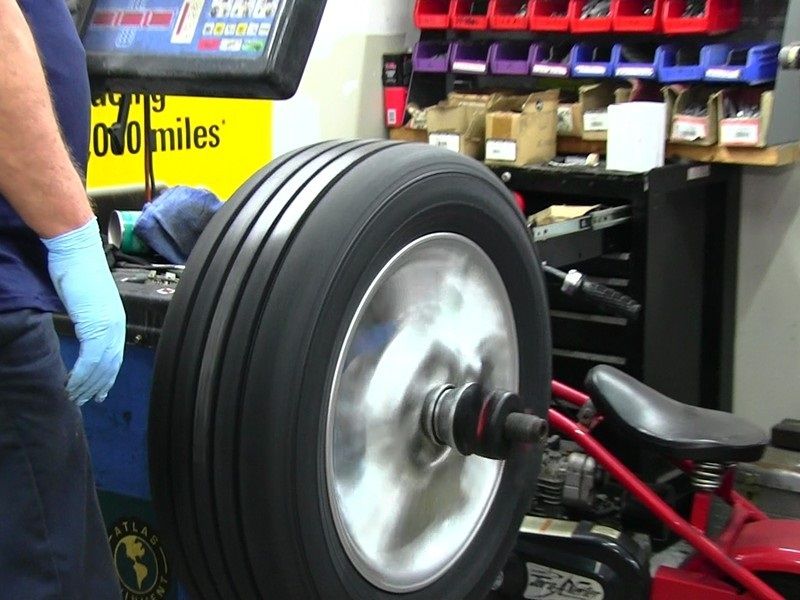 Not every tire, even among the major makers, is directly tested, though. Tires that don’t measure up in either factor are rejected.
Not every tire, even among the major makers, is directly tested, though. Tires that don’t measure up in either factor are rejected.
Tire manufacturers measure static balance by the use of a sensor mounted to the spindle assembly, and measure dynamic balance by mounting a tire on a test wheel, accelerating the assembly to 300 rpm or higher and then measuring the forces of imbalance as the tire rotates.
In most cases, the old-school bubble balancer is a thing of the past. Dynamic balancers – also referred to as “spin balancers” or “computer balancers” – are the most prevalent piece of equipment. Even among dynamic balancers, though, there are vast differences in not only features but, more importantly, precision.
Dynamic balancers not only determine the location of any imbalance, but also point out the exact amount of counter weight that must be added to correct the imbalance. Various available equipment features can make that an even more precise operation.
Road force variation balancing is yet another method that has been in use at the OE level for many years. While only in limited use in the aftermarket, road force variation equipment is becoming increasingly popular as vehicle sensitivity to imbalance becomes ever greater.
While only in limited use in the aftermarket, road force variation equipment is becoming increasingly popular as vehicle sensitivity to imbalance becomes ever greater.
Steps for Balancing a Tire/Wheel Assembly
Depending on the equipment you have, tire/wheel assemblies are balanced in a number of ways. The steps are outlined as follows if you are using one of the more modern, automated machines, like the Coats 1250. These instructions are not meant to cover every balancing situation.
Click here to download a PDF with images of each step of the following process.
Before a tire can be balanced, it must be concentrically seated. You can determine this by measuring the distance between the molded rib on the lower sidewall of the tire and the edge of the wheel’s rim flange. The tire must be deflated and reseated if the distance between the two points is greater than 2/32-inch.
After ensuring that the beads have reseated properly, the tire should be inflated to the recommended pressure.
1. Turn your machine OFF then ON, which resets the balancer. The machine wakes up using standard clip-on wheel weight locations.
2. Remove stones/rocks or other debris from tread and any weights already attached to the wheel. During this process you also should remove any mud, dirt or snow on the inside of the wheel and make sure that the mounting surface of the wheel is completely clean of debris.
3. Mount a tire/wheel assembly on a balancer that will use standard clip-on wheel weights. Use the most appropriate mounting method. Technicians should be careful to avoid back injury and should seek assistance when lifting a heavy tire/wheel assembly onto a balancing shaft.
4. There are three main mounting methods. They include:
• Back Cone – Most original equipment and steel wheels can be mounted properly using this method. The wheel is centered on a cone from the inner side of the wheel.
• Front Cone – A wheel should be centered by the outer side of the hub only when the inner surface will not provide an accurate surface to center on.
• Pin-Plate – An alternate method of securing and aligning an assembly on a balancing machine is the pin-plate method. A pin-plate is added instead of a pressure cup.
5. Enter A & D wheel dimensions using offset arm.
Before a wheel can be balanced, wheel dimensions must be entered into the computer on your unit. These include:
A = Offset – The distance measured from the balancer (“0” on offset arm) to inner plane of the wheel rim (inner weight location).
W = Width – The width of the wheel at the rim flanges, measured with calipers.
D = Diameter – The diameter of the wheel as indicated on the tire.
6. For automatic measurement, pull the offset arm out to the wheel, hold it still at clip-on weight position against the wheel flange and wait for a “beep.” Return the arm to home position.
7. Enter the wheel width dimension. Use plastic calipers to measure wheel width for manual entry. Press the W key. Use the keypad to enter width value (between 2 and 20 inches.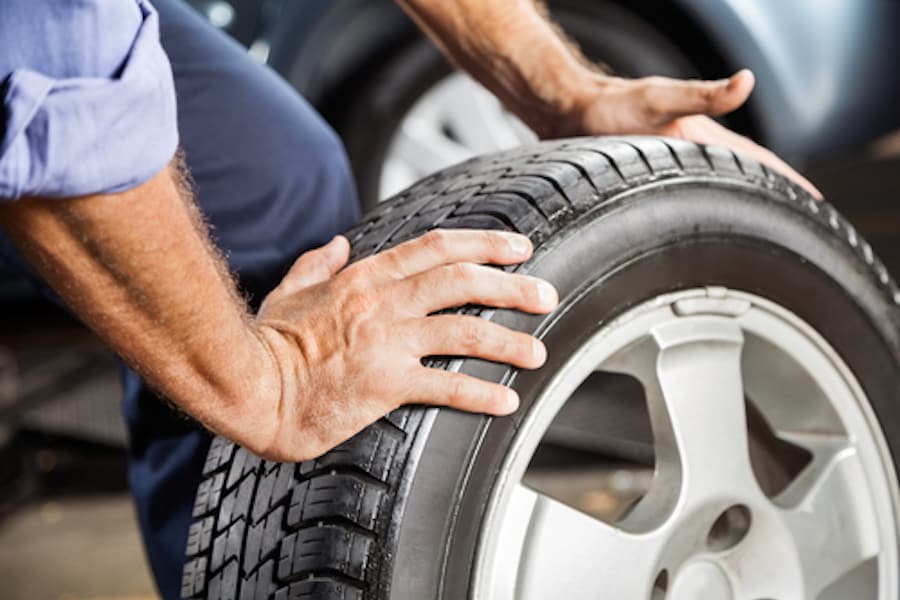 ) Lower the hood for automatic measurement.
) Lower the hood for automatic measurement.
Note the value entry of the W dimension.
8. Lower the hood. The wheel will spin and unbalances are measured and displayed. The corrective weight amount appears in the weight display window for inboard and outboard weight locations.
9. Raise the hood after the tire stops rotating. Make sure that the wheel has stopped before raising the hood.
10. Inboard center bar blinks. If an inboard corrective weight is not required, the wheel will stop at the outboard corrective weight location and you can go to Step 13.
11. Attach inboard corrective weight. Attach specified weight amount at top-dead-center on the inside flange of the wheel. NOTE: Wheel weight suppliers often will supply a rim flange contour gauge to help technicians select the correct clip-on weight for the wheel.
12. Press NEXT, causing the wheel to rotate.
13. The outboard center bar will blink.
14. Attach outboard corrective weights.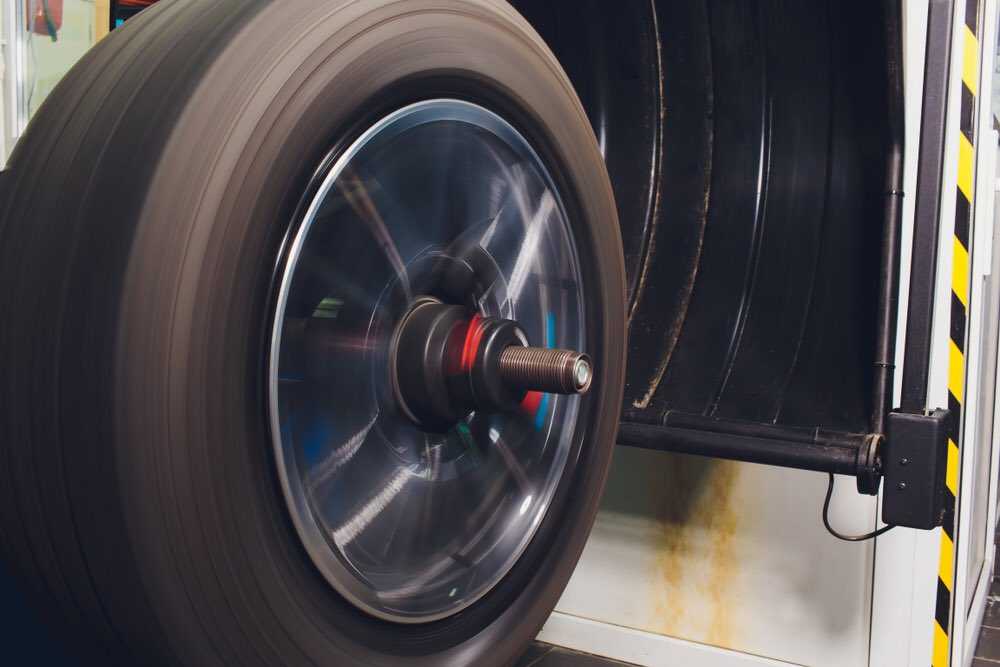 Attach specified weight amount at the top-dead-center on the outside flange of the wheel.
Attach specified weight amount at the top-dead-center on the outside flange of the wheel.
15. Lower the hood to respin the tire/wheel and check balance. The weight readings should now be 0.00.
How to Balance a Tire
The balancing steps outlined in this article are typical but will vary somewhat depending on the type of equipment used.
Recapping the steps, a technician must:
1. Turn on the balancer
2. Clean the tire, rim flange and wheel
3. Mount the tire/wheel assembly on a balancer
4. Enter the A & D wheel dimensions
5. Enter width wheel dimensions
6. Lower the hood to spin the wheel and check dimensions
7. Raise the hood after the tire stops rotating
8. Note when the inboard center bar blinks
9. Attach inboard corrective weight
10. Press NEXT, which rotates the wheel
11. Note when the outboard center bar blinks
12. Attach outboard corrective weights
13. Lower the hood to respin and check balance
Disclaimer
Tire/wheel balancing is a serious business.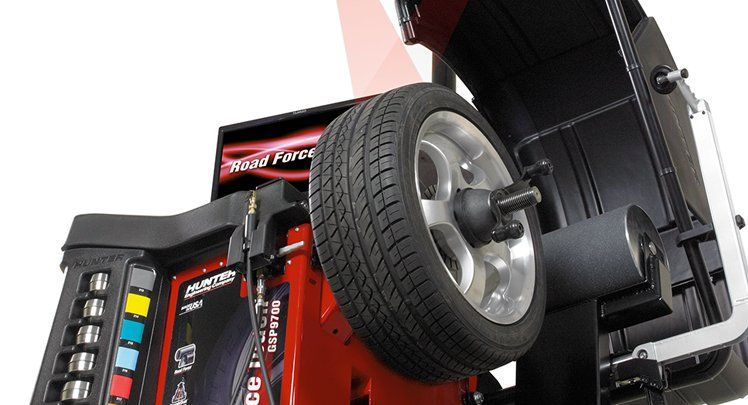 The preceding article was researched and written using material furnished by Hennessy Industries, including photos and diagrams. This information is NOT meant as a substitute for proper training by TIA, balancing equipment manufacturers or tire manufacturers.
The preceding article was researched and written using material furnished by Hennessy Industries, including photos and diagrams. This information is NOT meant as a substitute for proper training by TIA, balancing equipment manufacturers or tire manufacturers.
The balancing recommendations made here are consistent with practices used in the industry when operating this type of balancing equipment. This article is meant purely for educational purposes and those who use the methods recommended are solely responsible for any injuries or losses resulting from their application.
A Look at Wheel Weights
Just as there are a number of assembly balancing methods, there are a variety of weights for balancing purposes. There are standard clip-on weights of various types that are made to accommodate the contours of different rim flanges.
There are MC weights used on a number of U.S. vehicles, EN weights used on VW and Honda vehicles, FN weights for Japanese vehicles and IAW weights used on many South Korean and European vehicles.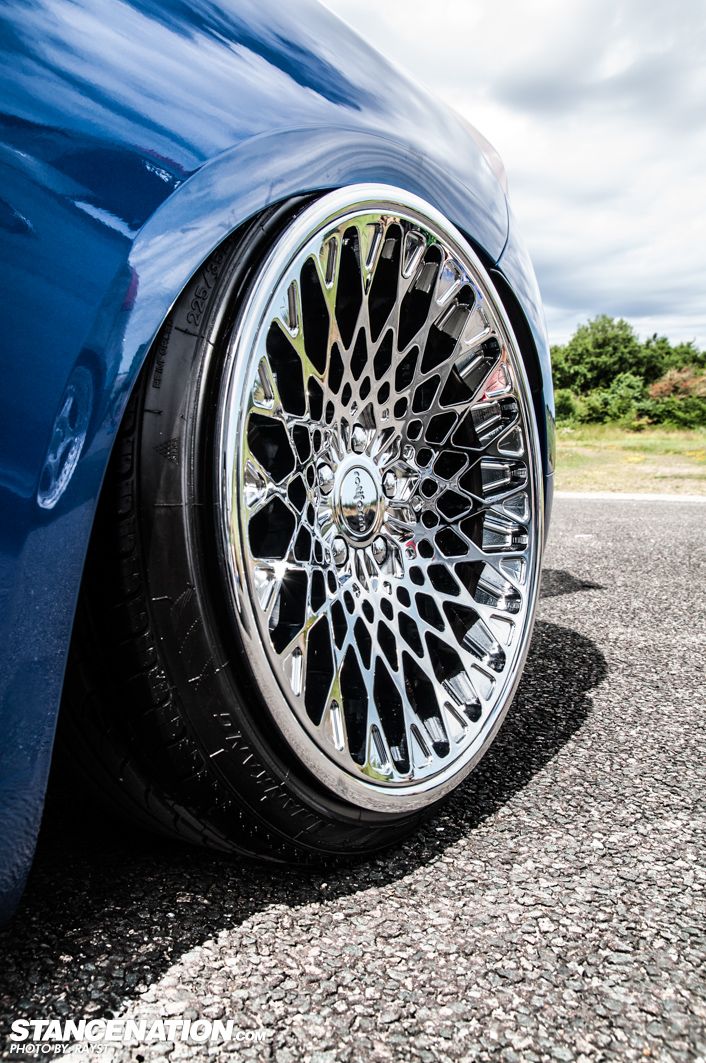 A few of these types are shown in this box.
A few of these types are shown in this box.
There also are adhesive weights that are not covered in this article. They are used for custom wheels or those that do not have an outside flange.
Additionally, there are three primary materials used to produce wheel weights. Lead weights, the original weights used to balance assemblies, are making their way out of the scene. Several states have outlawed lead weights – as have the European Union and Japan – and the EPA is considering national action.
Remaining alternatives for both clip-style and stick-on weights include zinc and steel.
Tire balancing is a tune-up for your wheel-tire set. It makes sure that weight is evenly distributed around the entire circumference of the unit. The common symptoms of out-of-balance tires are uneven and faster tread wear, poor fuel economy, and vibration in the steering wheel, the floorboard or the seat that gets worse at faster speeds.
When all areas of the wheel-tire unit are as equal in weight as possible, the tire will roll smoothly. This helps it wear evenly, for longest life. Balancing also contributes to ride comfort: Imbalanced tires will wobble or hop up and down, which causes vibration. If a front tire isn’t properly balanced you’ll likely feel vibration in the steering wheel. If the problem is in the rear the tremor will be noticeable in the seat or floor.
Imbalanced tires are easily corrected, but the work is precise. It’s done by attaching small weights, just fractions of ounces, to the wheel.
Everyday wear on tires will contribute to imbalance. Normal manufacturing imperfections are also a cause: Tires and wheels don’t have precisely equal weight distribution. They’ll be slightly heavier in some spots.
Just half an ounce in weight difference is enough to cause a vibration when you’re driving.
Rebalancing is done in a tire shop by putting the wheel-tire unit on a tire balancing machine that takes measurements to pinpoint lighter or heavier areas and making adjustments to account for these weight differences.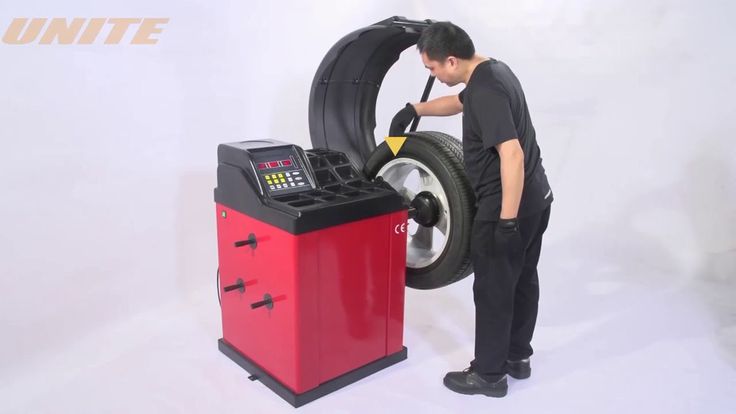 The best time to get it done is when tires are being rotated, both for convenience and because you might have a tire out of balance on the rear of the vehicle and won’t feel it until it is moved to the front.
The best time to get it done is when tires are being rotated, both for convenience and because you might have a tire out of balance on the rear of the vehicle and won’t feel it until it is moved to the front.
Here’s how it’s done:
Though both should be part of regular auto maintenance, balancing isn’t the same as getting an alignment. Wheel alignment corrects the angles of the tires so they travel in the same direction and make contact with the road properly. Alignment reduces uneven tire wear and extends the life of your tires. Oftentimes tire balancing and alignment are perceived to be the same thing, but are not.
Wheel alignment corrects the angles of the tires so they travel in the same direction and make contact with the road properly. Alignment reduces uneven tire wear and extends the life of your tires. Oftentimes tire balancing and alignment are perceived to be the same thing, but are not.
Tire balancing and rotation are often done at the same time, but they aren’t the same service. Tire rotation is when a vehicle’s front and rear wheels are switched to even out tread wear between them.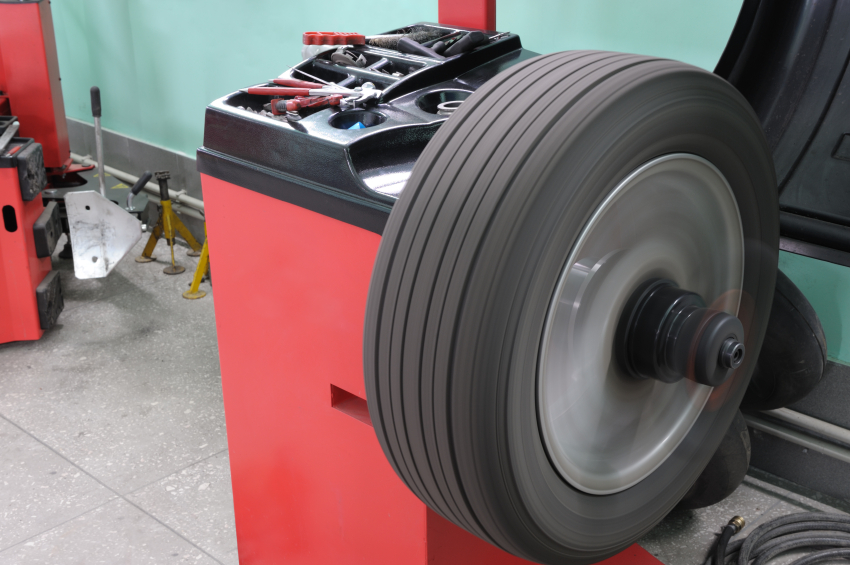 Since both require removing each wheel, it’s convenient to do them at the same time.
Since both require removing each wheel, it’s convenient to do them at the same time.
Vibration when underway could be caused by an imbalanced tire and wheel assembly or something else — a bent wheel, a damaged tire (which won’t be fixed by balancing), worn suspension parts or other aging components. If you feel a vibration, don’t wait to get it diagnosed. You’ll head off other problems — and enjoy a smoother ride — when your tires are well balanced.
Schedule an Appointment
Author: Kirill Savchenko
The modern car owner does not particularly go into the wheel balancing process. He perceives it as a kind of obligatory procedure for seasonal change of shoes and does not even realize how important its quality is.
He perceives it as a kind of obligatory procedure for seasonal change of shoes and does not even realize how important its quality is.
In fact, the effects of an imbalance in a rotating body can be seen at home. Try tossing your sneakers into the washing machine and spinning it. The imbalance that appears in the drum will cause it to beat, and with an increase in speed, the washing machine will rumble and shake. Something similar happens with a car whose wheels are out of balance.
Suspension and wheel bearings, steering elements, even with an imbalance of 10-15 g, receive thousands of beats per minute with an amplitude of 0.1-0.3 mm. They may be imperceptible to the driver, but act like a concrete hammer. Inexorably destructive. In addition, the imbalance increases tire wear and makes it uneven.
Considering that the imbalance on each wheel is different, the car becomes less stable when driving at high speeds. It is harder to manage, and on a slippery or wet road, the situation can completely get out of control.
So, imbalance appears when the center of mass of the wheel does not coincide with the axis of rotation. It would seem that this cannot happen on absolutely new tires or disks, because they are made in compliance with all technological requirements.
Yes, it is, but in any case, the tire does not come out perfect during the manufacturing process. Some of it may be a little thicker and heavier, some thinner and lighter. We are talking about millimeters and grams, which simply cannot be determined. After mounting on a disk, which is also not ideal due to the same technological reasons, a single structure is obtained that has a common center of mass. That is why the wheel is balanced as an assembly.
If it were a conditional thin disk, then the balancing would be only static. In this case, it is enough to balance the opposite centers of mass: the minimum and maximum. But a car wheel is wide, and therefore it needs dynamic balancing, on the outside and on the inside.
This is done with the help of special lead or zinc balancing weights weighing 5-60 g. On stamped disks they are fastened with steel clips-latches, on light-alloy ones - with self-adhesive strips. It is impossible to correct the imbalance on your own. For this, special balancing machines are used.
They vary in design, from the simplest to those equipped with laser sensors. The latter allow you to determine not only the imbalance, but also the curvature of the disk or the violation of its geometry. In this case, the owner will be offered to repair the disc or may be denied balancing due to its impossibility.
But even the presence of such a machine in the tire shop will not give any guarantee that the wheels of your car will be balanced correctly. Firstly, the machine must be fixed on a solid, better concrete base and stand strictly horizontally.
Secondly, the correct data on the size of the tire and disk must be entered into its electronic unit, and the machine itself must not have wear in the rotating elements and be calibrated.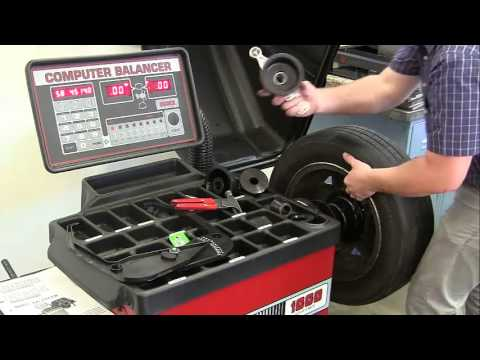 Finally, the master must have the appropriate qualifications and experience - as practice shows, 90% of success depends on this factor.
Finally, the master must have the appropriate qualifications and experience - as practice shows, 90% of success depends on this factor.
For example, if a wheel requires a significant amount of weight, he should be aware that turning the tire around the rim can reduce the imbalance and less weight will be needed. True, not everyone follows this rule, and here's why.
Changing the position of the tire relative to the rim in order to reduce the mass of weights required for balancing does not always lead to the desired result (the result is not known in advance!).
At the same time, labor costs for balancing and, as a result, its cost increase significantly. At the same time, a very large amount of cargo on the wheel may indicate a low qualification of the worker. On the other hand, automakers do not specify the maximum mass of weights used for balancing.
Ceteris paribus, the mass of weights required to compensate for unbalance will be minimal if they are installed at the maximum distance from the center of mass of the disk-tire system, i.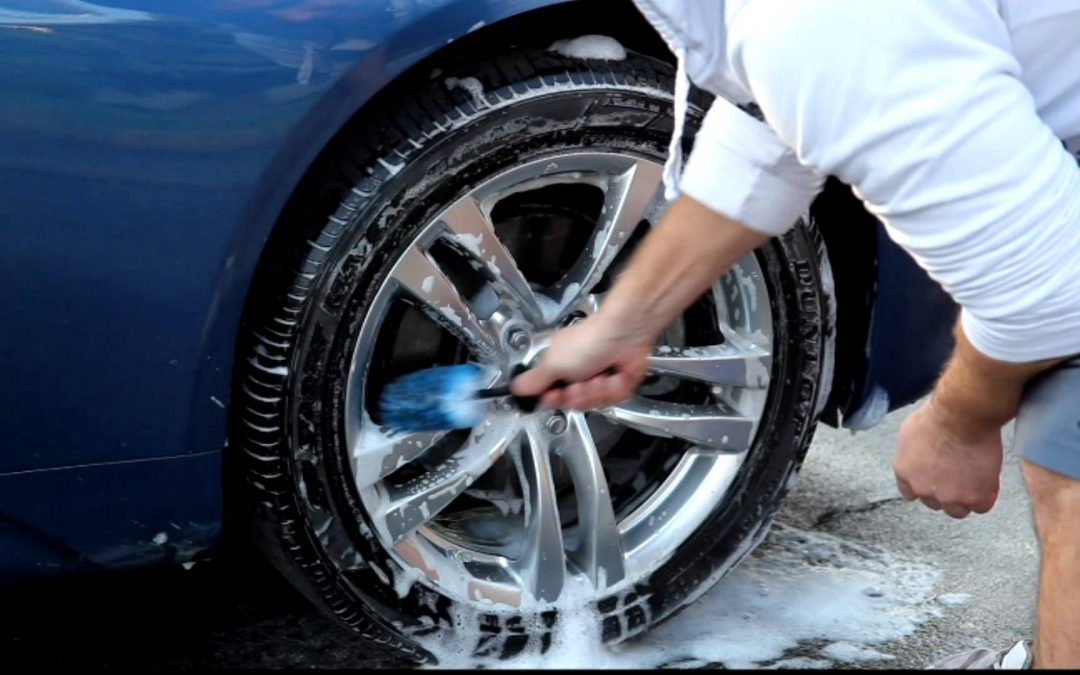 e. on the bead flanges.
e. on the bead flanges.
Installing weights closer to the center of mass of the "disc-tire" system (for example, in order not to spoil the appearance of the disk, the adhesive weight is placed on the inner surface of the rim) will inevitably lead to the need to increase their mass.
Also, the master must clean the tire from the smallest stones in the tread, and the wheel from adhering dirt. In case of deformation, be sure to inform the owner.
One of the most important things is mounting the wheel on the machine. In most cases, it is attached through the central hole of the disc. From the back, the wheel sits on a cone, and from the front it is fixed with a flange adapter and a clamping nut. This method increases the speed of the balancing process, but does not always provide perfect alignment.
Special Haweka adapters help to improve it. Their essence is that the wheel is clamped on the machine through the holes for the wheel studs. At the same time, the probability of damaging the paintwork of the rim is minimal. In addition, the adapter imitates an almost exact fit of the wheel on the hub and even the required tightening torque. In this case, the balancing accuracy will be higher. Flange adapters are available for various bolt patterns and can be used on any balancing machine.
In addition, the adapter imitates an almost exact fit of the wheel on the hub and even the required tightening torque. In this case, the balancing accuracy will be higher. Flange adapters are available for various bolt patterns and can be used on any balancing machine.
After installing the weights of the desired mass in the places indicated by the machine, the verification procedure is carried out again. If necessary, weights are either added or removed, but their weight should not exceed 5 grams. The wheel is considered balanced if the readings on the instrument panel are zero.
So when and how often is wheel balancing necessary? As a rule, in the manuals for the operation of cars, balancing is recommended every 10-15 thousand kilometers. But this is provided that the wheels were not disassembled.
That is, if the same wheels are used when changing tires seasonally, balancing is required. It is also necessary if the car has driven several thousand kilometers on bad roads or there have been cases of a wheel falling into a hole. But in this case, not one wheel is balanced, but a pair standing on the same axle.
But in this case, not one wheel is balanced, but a pair standing on the same axle.
Commentary of a SHINSERVICE specialist
Alexander Golubev
SHINSERVICE expert
Many drivers make a mistake when vibrations appear in the car, starting with a suspension overhaul or replacement of power unit pillows. The first thing you should pay attention to is the cleanliness of the wheels and tires. Unevenly distributed adhering mud, snow, ice, tar stuck to the tire tread after driving on a road section being prepared for repair - all this can cause imbalance.
The second important point is the mounting of the wheels. Each of them must be tightened to a torque in accordance with the recommendations of the automaker.
If everything is in order in this regard, then the wheel balance should be checked next. We advise you to do it only in proven specialized services, on certified equipment. And only if the measures taken have not yielded results, we recommend that you proceed to checking the setting of the angles of the front wheels and checking the condition of the suspension.
In any case, properly balanced wheels will avoid many problems in the future.
practice tires and wheels
Articles / Financial questions What cars can be bought under the state program of preferential lending and how much to save The market for new cars has been in crisis since March. Judge for yourself about the rate of decline: in February, 121,442 new cars were sold, and in May - only 24,837. All this forced the governments ... 190 0 0 10/19/2022
Articles / Popular questions On which side do you need to bypass the car when getting on and off and why it is important The life of a driver is full of important little things that are important to observe. Approaching the car, inspect it for visible defects. I got into the car - buckle up, turn on the low beam (if there is no DRL) ... 502 2 2 10/17/2022
Approaching the car, inspect it for visible defects. I got into the car - buckle up, turn on the low beam (if there is no DRL) ... 502 2 2 10/17/2022
Articles / Practice Stop on demand: what breaks in the brake master cylinder Everyone used to know what a master brake cylinder (or just a GTZ) is. Now they remember him much less often: the GTZ has noticeably increased reliability, and on new cars it practically fails .... 916 0 one 10/14/2022
Test drives / Test drive Haval Dargo vs Mitsubishi Outlander: the dog is barking, the stranger is coming In the Haval dealership in the south of Moscow, life is in full swing: buyers look at cars, communicate with managers and sign some papers.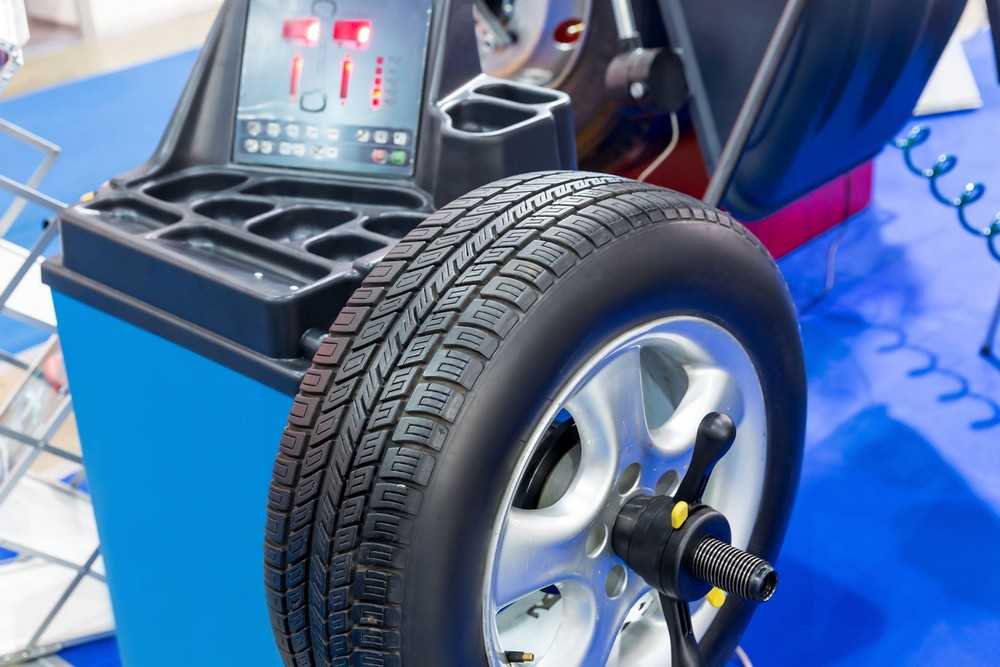 While I was waiting for the test Dargo, the same cross... 13805 7 186 13.09.2022
While I was waiting for the test Dargo, the same cross... 13805 7 186 13.09.2022
Test drives / Test drive Motor from Mercedes, emblem from Renault, assembly from Dacia: test drive of the European Logan 1.0 It would seem that what's new can be told about the second generation Renault Logan, known to every Russian taxi driver, as they say, up and down? However, this car has... 11901 ten 41 08/13/2022
Test drives / Test drive Geely Coolray vs Haval Jolion: Free Cheese? If! Do you want to buy a car today with a full warranty, on credit at an adequate rate, without wild dealer markups? Now this is still a task, because a full-fledged chain of "representation - s. .. 8871 25 thirty 08/10/2022
.. 8871 25 thirty 08/10/2022
Today, due to the use of oversized tires in cars, problems with correct wheel balancing often arise. They can also concern tires and small sizes. Body vibration that increases with driving speed, often felt primarily by the driver as steering wheel vibration, can have a variety of causes. For example, the usual wheel imbalance or tire wear, which has a non-uniform stiffness.
Experts recommend:
The less weights are used to balance the wheel, the better
can be reduced only using a balancing machine with road tests
problems with a trigger in the same time. . Tires under the influence of road load gradually wear out, lose their original stiffness characteristics.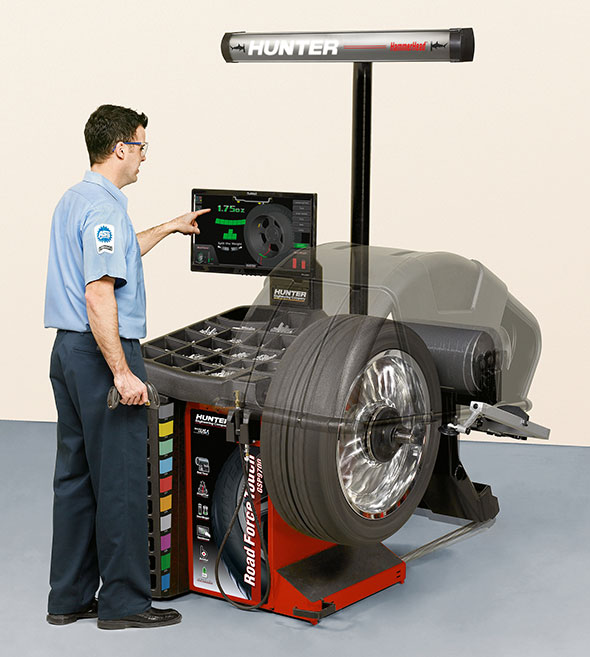
The situation when the wheel starts to bounce softly is completely invisible at low speed. Only when the car accelerates and reaches its cruising speed, that is, about 90 km / h, then the wheel begins to rotate 14-16 times per second. And this is where you feel the vibrations on the steering wheel.
The problem may persist even after changing shoes to new tires. Moreover, it is not true that tires must be necessarily expensive. Today's cars are getting more powerful and therefore faster. There were alloy wheels, large wheels.
See also Can I buy used tires
Increasingly, car owners are installing low profile tires. And it happens. You come to the tire shop. They install new wheels for you, balance them, check them. Everyone is happy. You go to the track, accelerate ... And return back to the same tire shop. Even experienced craftsmen cannot always determine what the problem is. And it can be associated, for example, with uneven radial stiffness of the tire.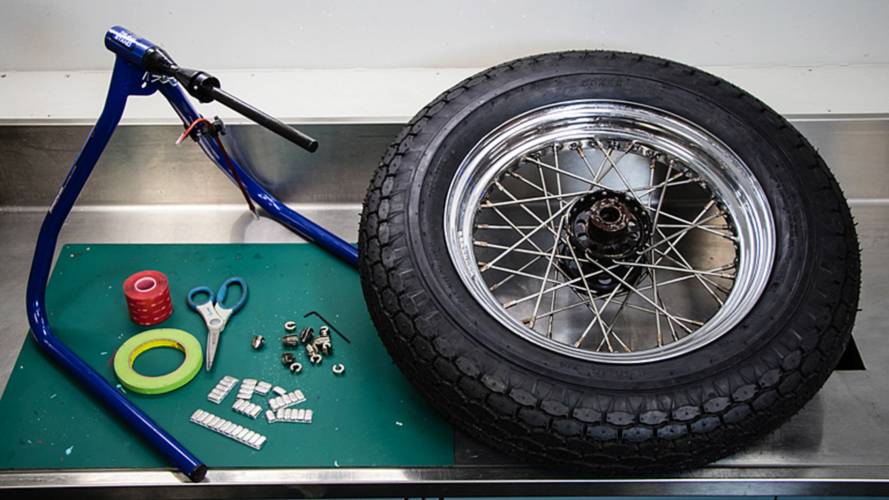 This and other flaws can be revealed by a road test balancing machine.
This and other flaws can be revealed by a road test balancing machine.
If a wheel behaves differently during movement than a wheel that rotates on a conventional balancer "in the air", then it is worth testing it under load. More and more workshops have a balancing machine with a so-called road test.
An additional roller is applied to the wheel that rotates on the device, simulating the load that occurs during natural road use. With this method, all the shortcomings that are invisible with traditional tire fitting are revealed. Information is displayed on the display, where the speed and weight parameters are indicated. The result is determined by a computer program. As a rule, balancing units with a road test can neutralize almost all tire defects. After that, during operation, the wheel will behave perfectly.
As you know, in the process of balancing the wheel, it is necessary to parry the imbalance of the rim and tire.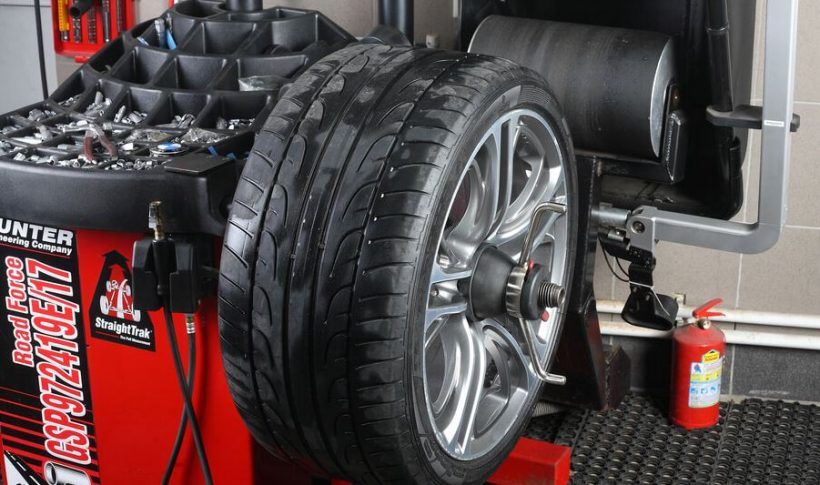 First you need to find the heaviest places separately on the tire and separately on the rim. Then separate them in opposite directions. Also, when balancing a wheel with uneven tire stiffness, you need to use a minimum of weights - by trial and error - to obtain the optimal setting.
First you need to find the heaviest places separately on the tire and separately on the rim. Then separate them in opposite directions. Also, when balancing a wheel with uneven tire stiffness, you need to use a minimum of weights - by trial and error - to obtain the optimal setting.
They can appear due to the curvature of the rim, and only minimal curvature can be corrected with a balance. Hard braking, aggressive driving, driving on bad roads, off-road - the more your driving style is calm, careful and accurate, the tire will last longer.
There are low-quality tires that lose their properties after 1-2 seasons. In addition, the tire may warp and vibrate due to prolonged vehicle inactivity. This applies to those for whom the car is not a permanent, but, say, a seasonal means of transportation. Even so, remember that the technique cannot be stagnant. It is necessary to travel at least a little, as they say, for the sake of appearances.